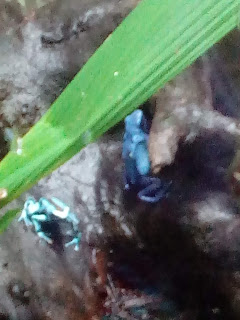--- Sociology in the colleges ---
The social sciences cover a very large conceptual area. Any situation in which more than one person is interacting is social. Even when there is only one person, the way they think about other people is social. So, it's no wonder that I can't just tell you what the universities around here focus on in the social sciences. From what I've said about psychology, philosophy, and religion in the area, you probably aren't to surprised that a lot of it is about social justice.
I didn't travel to Boulder for this one but I did look over the School of Sociology website. I noticed that they do have a focus on criminology, like Denver University. It lists four working groups that come together to discuss topics in sociology and I assume that those give some idea of what's going on there in research - what's in vogue. Those groups are:
Criminology and Criminal Justice Working Group
Culture, Power and Inequality Working Group
Political Economy Working Group
Population and Health Working Group
I did walk down the street to the Denver University and had a nice day of it. A major emphasis there seems to be criminology. For instance, one of the professors, Jared Del Rosso is doing some significant work about the public perception of torture.
The main building for sociology is the Strum Hall. The School of Sociology and Criminology is the largest on campus, consisting of 15 schools and departments.
[Sturm Hall]
Sturm Hall also houses the Denver University Museum of Anthropology. The public part of the museum is one small room but museums like this are my favorite. It is a teaching museum. Students interact with items in the less public museum holdings to create installations displaying their academic work. The study is ongoing, the information is current, and the displays deeply consider the items, the people who created them, the students who study them, and the visitor who views them.
When I visited, there was an installation about Korean shadow puppetry. The text on the wall emphasizes the importance of the shadow in the human psyche.
[Shadow]
The displayed artifacts were primarily Asian and North American (much was Hopi).
[Display]
"Activating the Collections" makes explicit what this museum is about. I'll let the museum, itself, explain.
[Activating the Collections]
The museum offered a book written by a professor at Denver University. I didn't expect much - I got much more. Sarah Milledge Nelson's Spirit Bird Journey is an engaging, very well written, but odd little story that weaves three threads together. It is a fascinating description of Korean culture that tells of an archeologist's research in Korea, and also tells of her spirit journey as a bird to paleolithic Korea. Part scientific expedition, part shamanic fairy tale, this novel is informed throughout by the author's own archaeological expertise, knowledge of Asian history and culture, and an excellent handling of narrative.
I decided to buy a copy for a friend and found that new paperback versions are hard to find - perhaps out of print. The original publisher was RKLOG Press in Littleton, Colorado but all I could find were used copies, hardbacks, and digital copies.
I also noticed that the author has written other novels and academic books. I will have to check them out.
Leaving the museum, I was treated to a stroll through the water gardens.
[Water gardens]
The semicircular plaque looks like a sundial or some kind of astrolabe but it actually points out the mountains that you can see from this point in the gardens. As you can see, in the summer, there are too many trees. Most of the campus is an arboretum.
[Mountains]
I have been passing a small wine bar for some time. Hiking, I'm not drawn to wine or espresso, but this time I stopped in and was delighted to be reacquainted with Italian sodas - the perfect drink for a hot summer day. I'm now identifying all the places around town where I can get Italian sodas. La Belle Rosette, on University Drive just south of the campus is now a favorite stop - friendly people with Italian sodas in the summer and specialty espresso drinks in the winter. What more could I ask for?
Are there any teaching museums in your area? They often are on college campuses but, not always. My favorite paleontological museum in the area is the Museum of Natural History in Morrison, which is also a research site. Again, it's a small museum but the staff is on the cutting edge of paleontology and the tours are packed with up-to-date information about fossils in an area where fossils are big.

























































